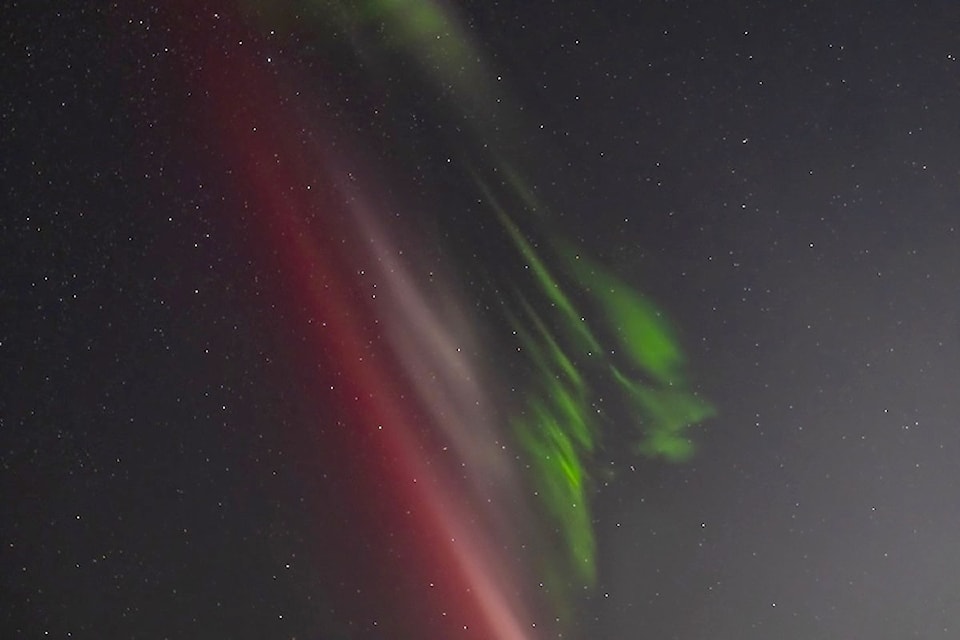If it seems as though the northern lights have been more active than usual this year, they have.
Since May, the aurora borealis have appeared over Vancouver Island several times. They were back again in Nanaimo Tuesday and Wednesday, Aug. 27-28, and actually began tinting the sky by twilight. The phenomenon carried on throughout the night with numerous photos of colourful aurora posted on social media.
Gregory Arkos, a professor with Vancouver Island University’s physics, engineering and astronomy department, said the sun has been more active this cycle than in the past several decades.
“The aurora display in May was the best I’ve seen here in over 20 years,” Arkos said in an e-mail. “I have caught some nice aurora here and there, usually once or twice a year – but photographic rather than visual – but this year has been pretty amazing.”
Aurora borealis, or the northern lights, are caused by waves of charged particles spewed from the sun’s surface during huge explosions knows as flares and coronal mass ejections. These geomagnetic storms of particles strike and interact with the Earth’s atmosphere to produce atmospheric light shows. During the peak of what is roughly an 11-year cycle, the sunspot, solar flare and coronal mass ejection activity peaks, causing more frequent and more intense aurora borealis. According to the British Geological Survey, the current solar cycle was predicted to peak this year.
The U.S. National Oceanic and Atmospheric Administration’s space weather prediction centre has called for more potential aurora activity for Wednesday, Thursday and Friday, Aug. 28-30.
While pictures of northern lights flooded local social media, Arkos captured on his cameras a phenomenon known as STEVE (strong thermal emission velocity enhancement), which appears as a defined band or arc of purple light in the sky. STEVE is associated with aurora, but according to NASA is not an aurora, but a band of hot glowing gases high in the atmosphere that usually appear farther south than the northern lights.
“I haven’t seen it many times and last night was a beautiful example of it,” Arkos said.



